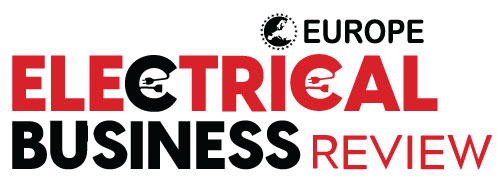Thank you for Subscribing to Electrical Business Review Weekly Brief
I agree We use cookies on this website to enhance your user experience. By clicking any link on this page you are giving your consent for us to set cookies. More info
Safeguarding Electronics: Demystifying Ingress Protection (IP) Ratings for Electrical Enclosures
In an increasingly connected world, where electronic devices are omnipresent, protecting sensitive equipment from environmental factors cannot be overstated.

By
Electrical Business Review | Wednesday, June 05, 2024
Stay ahead of the industry with exclusive feature stories on the top companies, expert insights and the latest news delivered straight to your inbox. Subscribe today.
In an increasingly connected world, where electronic devices are omnipresent, protecting sensitive equipment from environmental factors cannot be overstated.
FREMONT, CA:The guardians of this vital task are electrical enclosures, structures designed to shield electronics from dust, moisture, and other potential hazards. One of the most crucial tools in assessing an enclosure's capability to ward off these challenges is the Ingress Protection (IP) rating. Let's delve into the significance of IP ratings and how they offer a clear window into an enclosure's level of protection.
Decoding the IP Rating System: A Dual-Code Cipher
IP ratings utilise a two-digit code to quantify an enclosure's ability to withstand solid particles and liquids intrusions. The first digit indicates protection against solid objects, while the second digit reflects defence against liquids. The higher the numerical value of each digit, the greater the protection.
The first digit ranges from 0 to 6, with 0 implying no protection against solid particles and six denoting complete dust tightness. This digit gauges the enclosure's ability to prevent dust, dirt, or debris from infiltrating and compromising internal components.
The second digit spans 0 to 8, indicating protection levels against liquids. A rating of 0 suggests no liquid protection, while 8 signifies the enclosure can withstand prolonged immersion beyond 1 metre. This digit measures how effectively the square can safeguard against water ingress in various forms, from dripping water to powerful jets.
The Weight of IP Ratings: Industry Significance
IP ratings have transformative implications for diverse industries that rely on electrical enclosures to maintain the integrity of their electronic systems. These ratings serve as a common language, allowing professionals to make informed decisions based on their specific environmental challenges.
Industries such as manufacturing, telecommunications, healthcare, and outdoor infrastructure are beneficiaries of IP ratings' guidance. In manufacturing, where machinery generates particles and liquids, enclosures with high IP ratings are pivotal. In telecommunications, networking equipment requires squares that can repel dust and endure moisture exposure, ensuring the reliability of critical communication systems.
Putting IP Ratings into Context
Imagine a scenario where outdoor security cameras need to endure rain and potential dust accumulation. An enclosure with an IP65 rating signifies that it's completely dust-tight (6) and can withstand low-pressure water jets (5). This rating assures that the cameras remain operational and unaffected by external elements, providing reliable surveillance even in challenging weather conditions.
In a hospital setting, where cleanliness and hygiene are essential, sensitive medical equipment necessitates protection against liquids and potential contamination. An IP67 rating ensures the enclosure can withstand temporary immersion and high-pressure water jets, guaranteeing that vital medical technology remains operational and sterile.
Fortifying Electronics: Beyond the Acronym
IP ratings transcend mere acronyms; they embody a commitment to reliability and functionality. These ratings empower professionals to select the proper enclosure for their applications, eliminating the guesswork and ensuring that equipment is safeguarded against environmental adversities.
As technology advances and industries expand their horizons, the role of IP ratings remains pivotal. By providing clarity in environmental protection, these ratings uphold the foundations of innovation, connectivity, and operational integrity across industries. They serve as a testament to the engineering brilliance that ensures electronics stay shielded and operational, upholding the promises of an interconnected world.








